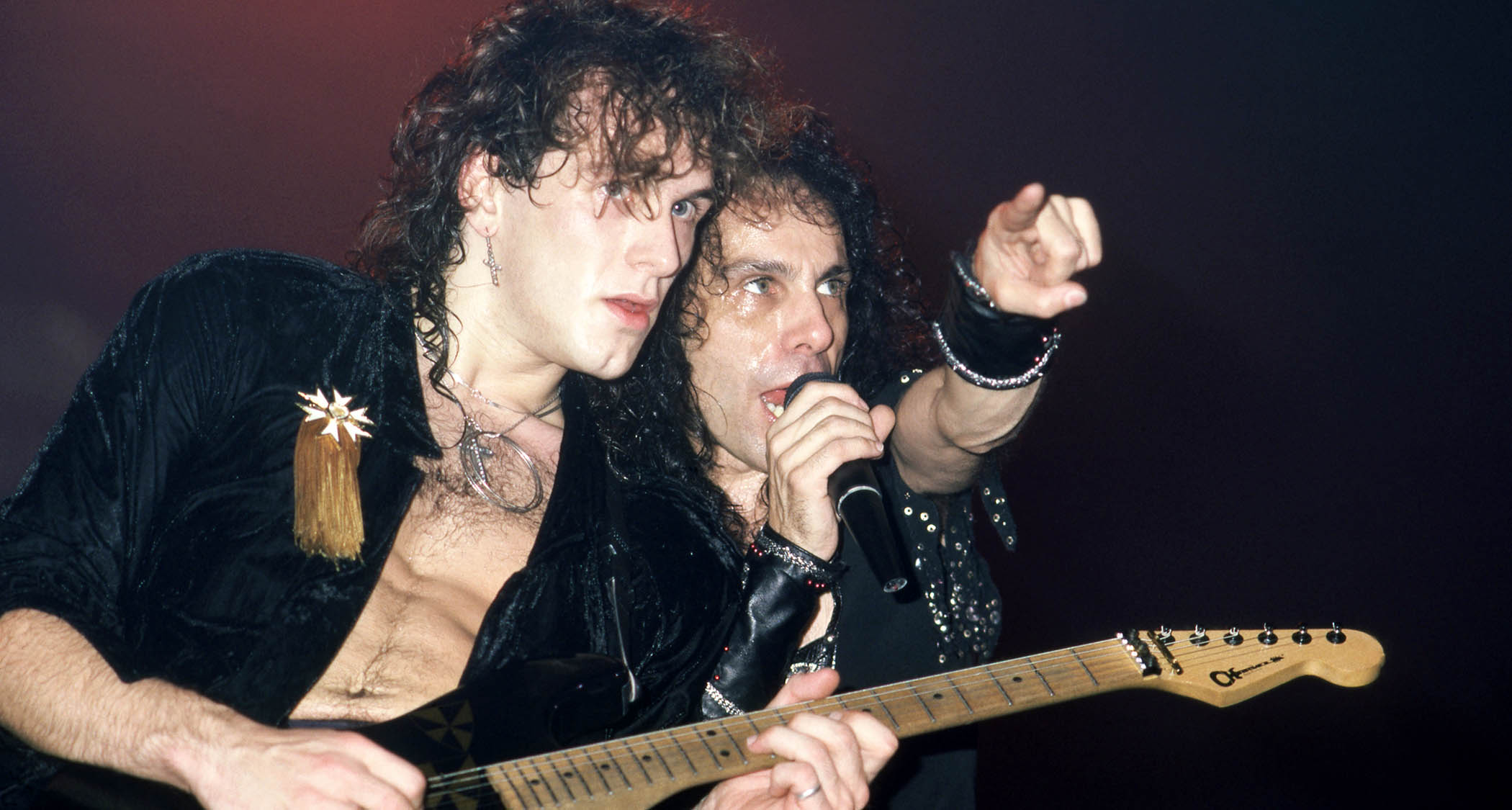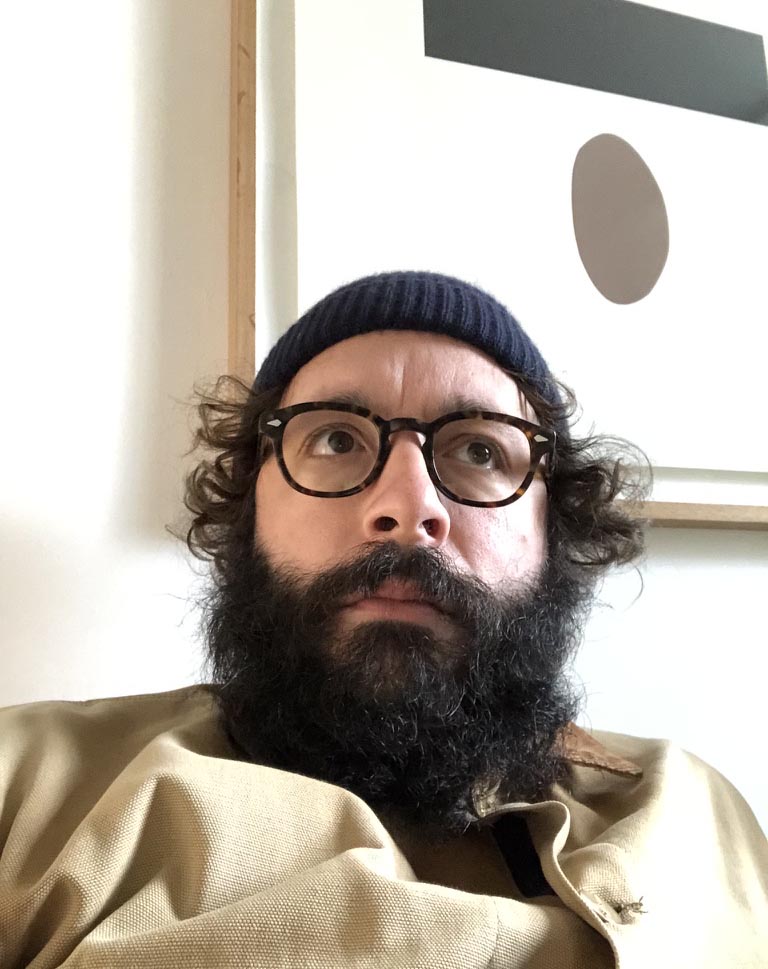“I could tell that he was very proud… ‘This is my guy, my guitar player. I found him under a rock in Belfast!’”: Vivian Campbell on his complicated relationship with Ronnie James Dio – and what Dio told Ozzy Osbourne about his playing
Campbell says working with the late, great Ronnie James Dio wasn't always easy – and it didn't help that Campbell once likened him to Tom Jones

Def Leppard guitarist Vivian Campbell has been looking back on his time with Ronnie James Dio and describes a complicated relationship with one of metal’s most charismatic frontmen.
There was the age gap, and all the life experience that goes with it. Dio had fronted Rainbow and Black Sabbath. He was the star. Campbell has always said it felt like he was playing in a band with his stepfather; until recently, he was unsure of his place in the Dio story. Plus, Dio could blow hot and cold.
Dio had a certain temperament. He did not look kindly on Campbell’s smiling in a band photo. Nor did he care for Campbell’s suggestion that he could sing backing vocals. But when it counted, he knew the value of his young lead guitarist.
In the early ‘80s arms race for electric guitar supremacy, Dio would stand by his man, and speaking with Mike Cass for the dopeYEAH talk YouTube channel and podcast, Campbell says it was clear that Dio was “proud” of him – and paid him what’s surely the ultimate compliment in metal guitar, when the former Sabbath frontman met the original former Sabbath frontman, Ozzy Osbourne, and they got talking about his playing.
“There were times when Ronnie and I really got along great, and there were, unfortunately, many times when we were just butting heads. But I knew that he was very proud of me,” says Campbell. “I remember one European tour, we were on a ferry – obviously in Scandinavia – going somewhere from somewhere – and we were just both standing out on the deck, wind in the hair, watching the water.
“And he said to me, ‘You know, I met Ozzy Osbourne a few weeks ago, I was talking to Ozzy and I said, you were my Randy Rhoads… That’s to me, what Randy was to you, someone I could really work with.’”
For Campbell, this was much-needed validation.
Want all the hottest music and gear news, reviews, deals, features and more, direct to your inbox? Sign up here.
“I just remember thinking, ‘Wow!’ I just felt, at that moment, like, ‘Okay, I can work with this guy.’ I felt like I belonged,” says Campbell. “There was a foundation to build on. But then, the next day, I’m still thinking, ‘Oh my God, I’m in a band with Ronnie Dio. Holy shit!’ I really never could let go of that.”
Campbell never did. He admits that it took him decades to feel like he really owned those early Dio records. It was only after Dio died in 2010 – two decades of Def Leppard – that he processed what that time had meant to him. But we have to remember, Campbell’s rise was meteoric.
He got his start in 1979, playing in hometown rock champs Sweet Savage, who were starting to build some momentum before Campbell ultimately joined up with Dio. In 1981, Sweet Savage had signed to Park, released the 7” single, Take No Prisoners, and were on tour with Thin Lizzy.
Sweet Savage played Lizzy’s legendary show at Slane Castle, in Dublin, and while Campbell was plucked from their ranks just as things were getting going, they had established their NWOBHM bona fides – Metallica would cover Take No Prisoners’ B-side, Killing Time live. In 1991, they made it official, releasing their version as the B-Side to The Unforgiven, the second single from the Black Album.
Watching how Thin Lizzy frontman, Phil Lynott, would carry himself gave Campbell a taste of what was to come. When he joined Dio, he had arrived in the big time. Dio had a similar aura about him – and he had that peerless voice.
Campbell says it was 100 per cent natural. He didn’t warm-up by running scales before the show.
“I remember saying to Ronnie, ‘You remind me of Tom Jones.’ Because he had that strength? That tonality to his voice. I didn’t mean it as an insult, but I don’t think he took it well,” says Campbell. “I said, ‘Ronnie, you’re ballsy… You’re masculine! You really remind me of Tom Jones. The look on his face. I thought, ‘Oh, maybe I shouldn’t have said that.’”
Campbell tells Cass there were a few bones of contention. His offer of backing vocals was met with a stern ticking off.
He said, ‘No. Ritchie Blackmore didn’t sing. Tony Iommi didn’t sing. You’re not singing. Guitar players don’t sing
“He said, ‘No. Ritchie Blackmore didn’t sing. Tony Iommi didn’t sing. You’re not singing. Guitar players don’t sing,’” recalls Campbell. “And I went, ‘O-kay. I’m not going to ask that again.’”
Campbell tracked three studio albums with Dio – Holy Diver (1983), The Last In Line (1984), and Sacred Heart (1985) – but by 1986, he was out. That was another thing, Dio said Campbell quit. Campbell maintains he was fired, and that hurt. Their relationship might have had its issues, but when it was good, there was no question of how highly Campbell was regarded.
“I could tell he was very proud of me,” says Campbell. “He used to take me to the Rainbow Bar and Grill in LA, in Hollywood, and go there on a Friday or a Saturday night, and Ronnie would have the big table, and the whole entourage would be there, and I could tell that he was very proud, like, ‘This is my guy, my guitar player. I found him under a rock in Belfast!’”
Playing in Dio left its mark on all of Ronnie James Dio’s collaborators. In 2012, Campbell got together with fellow Dio alumni, drummer Vinny Appice, bassist Jimmy Bain and keyboardist Claude Schnell to form Last In Line. Andrew Freeman was recruited on vocals.
I used it for the Holy Diver recordings and tours, then I put it away and started plating pointy headstock guitars with a wang bar just like everybody else in the ‘80s
What started as an excuse to play these tracks live soon became a side project with three studio albums to their name. It was also a good excuse for Campbell to bring his beloved Les Paul out of storage and put it into action again.
Speaking to MusicRadar in 2019, upon the release of Last In Line’s sophomore album II, Campbell said his Les Paul was enjoying a new lease of life.
“I need one sound. I can use the pickup switch and volume knobs on my Les Paul to keep it simple and organic,” he said. “It’s a noisy rig, though… it sounds a bit like a Friday night in a Glasgow chip shop, haha! We play loud and noisy rock ’n’ roll; who said it should sound pretty?!
“My Dio-era Les Paul, #72987537, was on every track and pretty much every solo… I started out on that guitar; I got it when I was 15 and in Sweet Savage. I used it for the Holy Diver recordings and tours, then I put it away and started plating pointy headstock guitars with a wang bar just like everybody else in the ‘80s.”
Jonathan Horsley has been writing about guitars and guitar culture since 2005, playing them since 1990, and regularly contributes to MusicRadar, Total Guitar and Guitar World. He uses Jazz III nylon picks, 10s during the week, 9s at the weekend, and shamefully still struggles with rhythm figure one of Van Halen’s Panama.
You must confirm your public display name before commenting
Please logout and then login again, you will then be prompted to enter your display name.
![Dio - Holy Diver (Official Music Video) [HD] - YouTube](https://img.youtube.com/vi/2lvs2FzF64o/maxresdefault.jpg)


![Dio - Stand Up And Shout (Official Music Video) [HD] - YouTube](https://img.youtube.com/vi/nBCntJHLanI/maxresdefault.jpg)
![Dio - Rainbow In The Dark (Official Music Video) [HD] - YouTube](https://img.youtube.com/vi/PrBUjXaRSUQ/maxresdefault.jpg)
